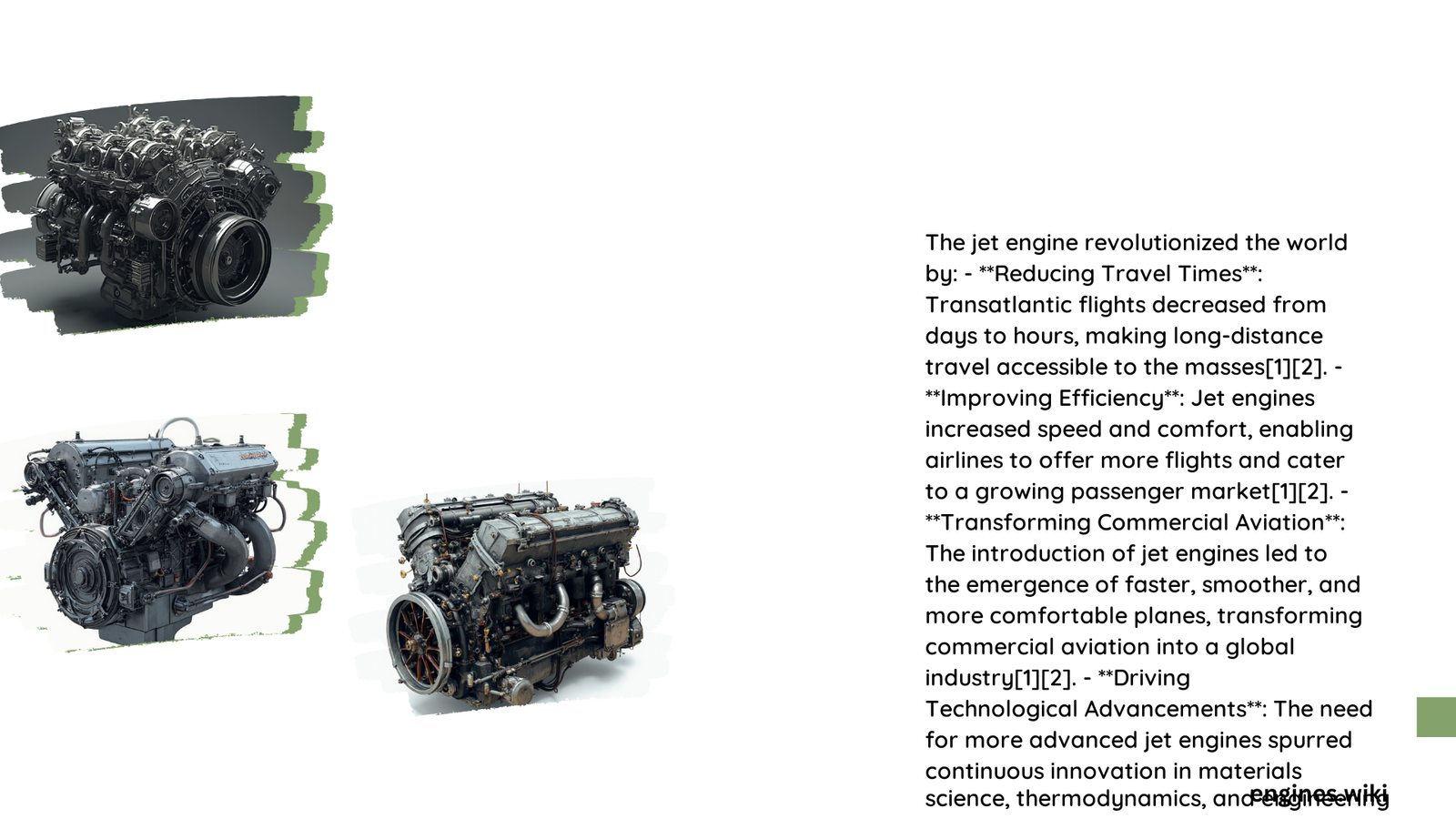How the Jet Engine Transformed Global Civilization
The jet engine represents one of humanity’s most transformative technological innovations, revolutionizing transportation, warfare, economic systems, and global connectivity. By enabling unprecedented speed, efficiency, and range in aerial travel, jet engines fundamentally reshaped human mobility, shrinking geographical distances and creating unprecedented opportunities for global interaction and economic expansion.
What Technological Breakthroughs Enabled Jet Engine Development?
Early Pioneering Moments
The jet engine’s genesis can be traced to groundbreaking work by inventors Frank Whittle in Britain and Hans von Ohain in Germany during the 1930s and 1940s. Their revolutionary designs challenged traditional propeller-based aviation technologies, introducing a fundamentally new approach to aerial propulsion.
| Era | Key Technological Milestone | Thrust Capability |
|---|---|---|
| 1940s | First Operational Jet Engine | 1,000 lbs |
| 1950s | Turbojet Advancements | 5,000 lbs |
| 1990s | High-Performance Turbofans | 115,000 lbs |
Material Science Innovations
Critical advancements in metallurgy and engineering enabled jet engine progression:
- Development of heat-resistant alloys
- Introduction of directional solidification processes
- Advanced thermal barrier coating technologies
- Precision blade manufacturing techniques
How Did Jet Engines Transform Global Transportation?
Dramatic Speed and Efficiency Improvements
Jet engines dramatically reduced travel times and expanded global connectivity:
- Transatlantic flights reduced from 18 hours to 7-8 hours
- Passenger numbers grew from 25 million (1950) to 4.5 billion (2020)
- Enabled long-distance, non-stop international routes
Economic Impact Metrics
The aviation sector’s growth demonstrates jet engine’s transformative power:
- Created 87 million global jobs
- Generated $500 billion annual industry revenue
- Directly contributed to national GDP growth
What Challenges Did Jet Engine Development Address?
Technical Evolution
Engineers continuously improved jet engine capabilities:
- Noise reduction technologies
- Enhanced fuel efficiency
- Lower environmental emissions
- Increased thrust-to-weight ratios
Regulatory Compliance
Stringent international standards drove continuous technological innovation:
- International Civil Aviation Organization (ICAO) guidelines
- Environmental Protection Agency (EPA) emissions regulations
- Continuous performance improvement mandates
What Future Possibilities Exist?
Emerging Technologies
Next-generation jet engine research focuses on:
- Sustainable aviation fuels
- Electric and hybrid propulsion systems
- Advanced computational design techniques
- Artificial intelligence-driven optimization
Conclusion: A Legacy of Human Innovation
The jet engine symbolizes humanity’s relentless pursuit of technological advancement, demonstrating how scientific creativity can fundamentally reshape global systems and human potential.

